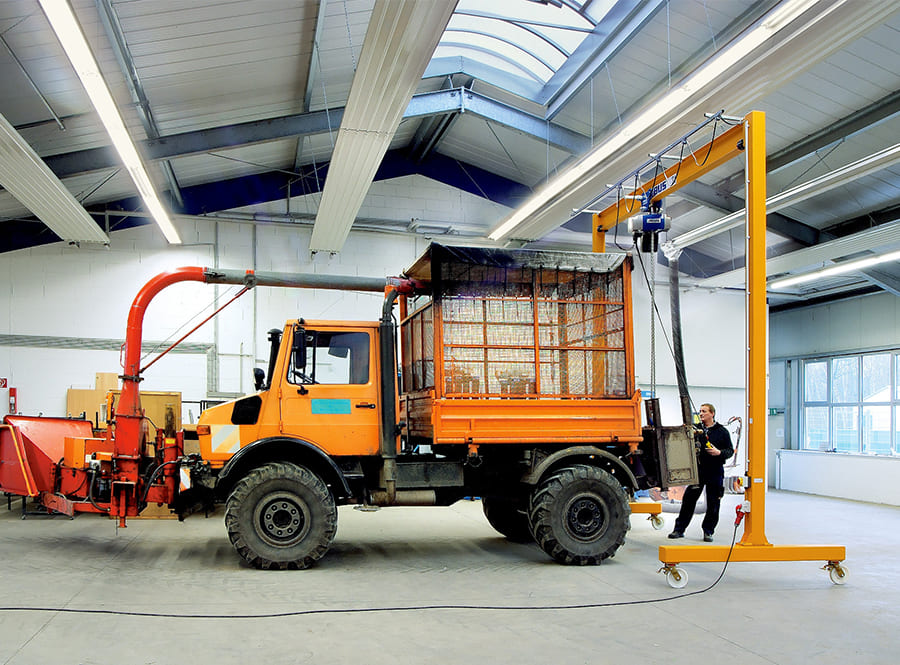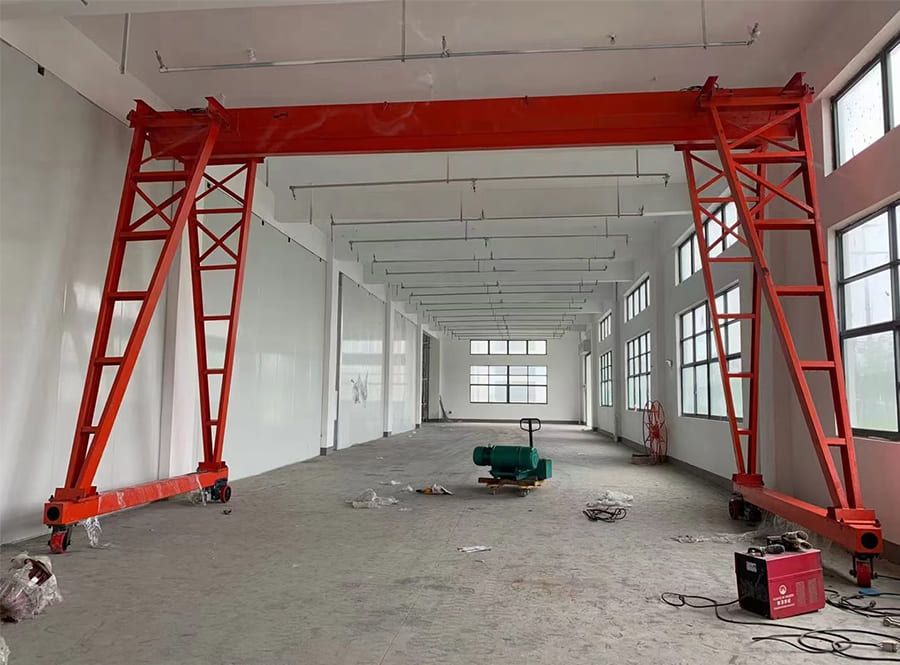EN bærbar portalkran, også kjent som en bærbar overheadkran eller en bærbar brokran, er en allsidig løfteanordning som er mye brukt i ulike bransjer. Den tilbyr bekvemmeligheten av mobilitet og fleksibilitet, noe som muliggjør effektiv materialhåndtering og løfteoperasjoner. Denne artikkelen vil utforske nøkkelfunksjonene, fordelene og bruksområdene til bærbare portalkraner.

Design og struktur:
Bærbare portalkraner består vanligvis av en solid stålramme støttet av fire hjul eller hjul for enkel bevegelse. Rammen er utstyrt med justerbare ben, som muliggjør høydejustering og stabilitet på ujevne underlag. Kranens bjelke eller bro spenner mellom bena, og det er festet en talje for løft og senking av last.
Enkel montering og bærbarhet:
En av de betydelige fordelene med en bærbar portalkran er dens enkle montering og demontering. De fleste modellene kan raskt settes opp uten behov for spesialverktøy eller utstyr. Denne portabiliteten gjør det mulig for brukere å flytte kranen til forskjellige arbeidsområder etter behov.
Lastekapasitet og rekkevidde:
Bærbare portalkraner er tilgjengelige i en rekke lastekapasiteter, vanligvis fra noen få hundre kilo til flere tonn. Brukere kan velge riktig kran basert på deres spesifikke løftekrav. Denne fleksibiliteten gjør dem egnet for ulike bruksområder, inkludert varehus, verksteder, byggeplasser og vedlikeholdsoperasjoner.
Allsidige bruksområder:
Bærbare portalkraner finner applikasjoner i en rekke bransjer og oppgaver, inkludert:

Konklusjon:
Bærbare portalkraner tilbyr en praktisk og allsidig løfteløsning for et bredt spekter av industrier og bruksområder. Deres mobilitet, enkle montering og justerbare lastekapasiteter gjør dem til verdifullt utstyr for effektiv materialhåndtering og løfteoperasjoner. Ved å følge sikkerhetsretningslinjer og riktig bruk kan brukere maksimere fordelene og sikre sikker drift mens de bruker en bærbar portalkran.